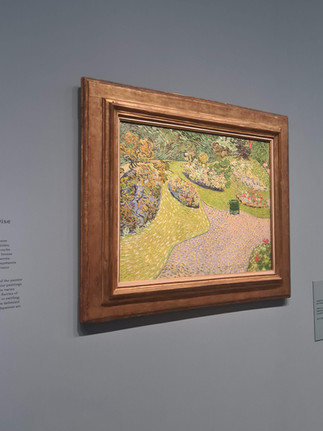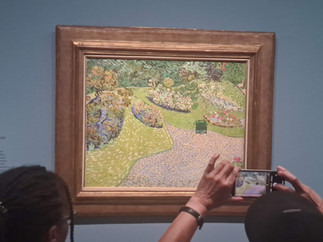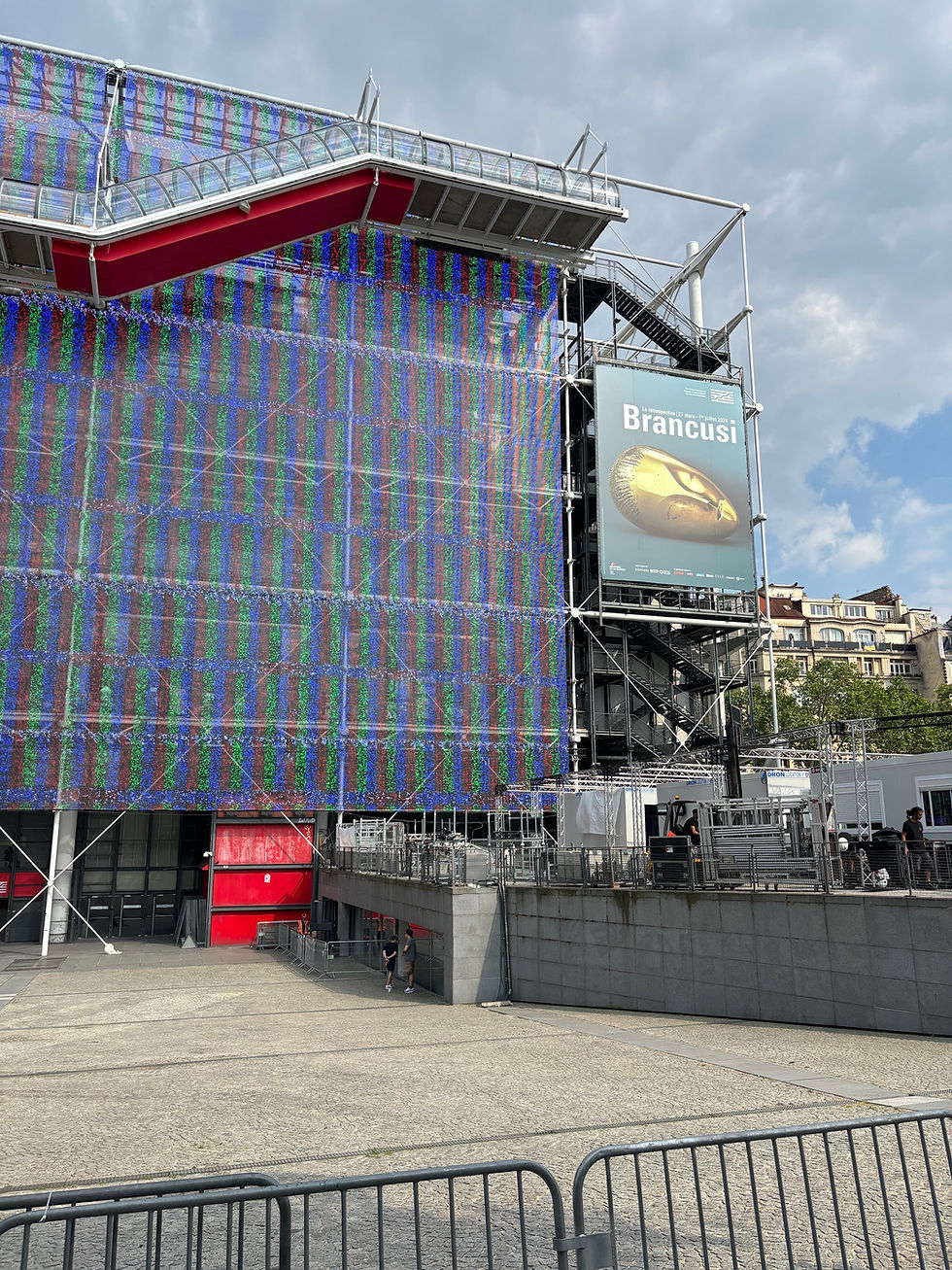VAN GOGH FOREVER
- Zoe Chambers

- Oct 11, 2023
- 4 min read

PARIS.FRANCE
After a somewhat underwhelming "Gertrude Stern and Picasso" exhibition at the Luxembourg Museum, which recently made its debut in Paris, my visit to the Van Gogh exhibition at the Musée d'Orsay was met with a tinge of skepticism. With such prominent names and an intriguing subject—Van Gogh's final months—there was, naturally, a horde of eager attendees forming a formidable queue at the exhibition's entrance. The prospect of wasting precious time amid the throng can be a disconcerting thought. However, despite the crowds and dimly lit rooms, this exhibition manages to shine.
For those enamored with Van Gogh, it's well worth spending a couple of hours immersing oneself in the breathtaking landscapes of Auvers-sur-Oise, vividly depicted by the enigmatic Dutch artist.
Delving into the life story of Van Gogh would require an entire series of exhibitions, and I'm certain more will emerge in various museums soon. This particular exhibition, however, is dedicated to his last two months of life spent in the town of Auvers-sur-Oise, a mere 35 kilometers from Paris.

Coincidentally, I had visited this town for the first time this summer. My mission was to collect a couple of art books acquired at an auction, and the auction house happened to be in this village. What struck me as I entered the village was the pervasive commercial spirit of Van Gogh, evident in nearly every shop, restaurant, and café. It's challenging to find an establishment that doesn't bear Van Gogh's name in some form. Even a dog grooming shop was humorously named "Chez van Dog."
With a couple more hours to spare in the town, I decided to pay a visit to the artist's grave and have a lunch. I also explored the so-called "Maison de Van Gogh," (house of Van Gogh) which was, in all honesty, a money-making scheme. For a hefty 7 euros, you and 10 others are ushered through just two random rooms in the attic, featuring a haphazardly placed someones old bed, and then spend 15 minutes in a dark room where old postcards of the village are projected onto a big screen. Oddly, photos are prohibited "out of respect for the place where the great artist died," according to the staff, yet you're allowed to sketch for about three minutes before the next group impatiently knocks on the door.

Today, Auvers-sur-Oise stands as one of the most vibrant and lively among French "sleeping" villages and towns that have succumbed to the impersonal grasp of e-commerce and large supermarkets, causing local cafés, bars, and restaurants to fade away. However, Auvers-sur-Oise has managed to resist this trend, welcoming a continuous stream of cars, trains, and buses ferrying art lovers who come to pay homage to Van Gogh.
The visionary Dutch artist, even 130 years after his passing, breathes life into the entire town, attracting visitors to explore his grave, the house where he lived and died, and numerous plastique plaques featuring his paintings at their respective locations.
Van Gogh was astonishingly prolific during his two months in Auvers-sur-Oise, arriving on May 20, 1890, and passing away on July 29 of the same year. During this brief period, he created a staggering 74 paintings, with most of them presumably gracing the walls of the Musée d'Orsay for this exhibition.
He often produced more than one painting in a day, experimenting freely with new approaches to color, brushwork, formats, and subjects. The exhibition includes a somewhat less popular section on the technical aspects of Van Gogh's work, but if you're intrigued by his methods, I highly recommend spending a few minutes there.

While some sources suggest that Van Gogh was hospitalized due to his deteriorating mental health, it's likely that he came to be examined by Dr. Gachet and opted to stay at an auberge instead of a hospital. During this period, Dr. Gachet, an amateur artist himself, created several drawings and paintings, some of which are featured in the current exhibition.
Interestingly, Van Gogh's portrait of Dr. Paul Gachet fetched a record price of $75 million in 1990 at Christie's in New York, becoming the most expensive Van Gogh painting ever sold.
The exhibition also presents Van Gogh's drawings and his study of grand masters like Delacroix and Jordaens, showcasing a total of approximately 33 drawings from his last months.
Among the highlights of the exhibition are a self-portrait of Van Gogh, "The Church of Auvers," and his very last paintings, "Three Roots" and "Wheatfield with Crows."
ABOUT EXHIBITION
The collection is a rich and diverse assembly of works, logically presented. However, the allure and richness of the exhibition are somewhat overshadowed by the dimly lit, somber gray-blue walls. On a positive note, the technical team behind the scenography deserves applause for the non-reflective glass frames and comfortable vitrines displaying books and drawing pads. The exhibition's major drawback is its relatively compact space, considering the significant attendance it draws for such a monumental subject. Nonetheless, we await the reopening of the Grand Palais, where spectacular shows can enjoy more ample ceilings, space, and lighting.
Exhibition: Van Gogh in Auvers-sur-Oise. The Final Months
Musee Orsay. Esplanade Valéry Giscard d'Estaing, 75007 Paris, France
From October 03rd, 2023 to February 04th, 2024
Reservation is strongly recommended

































































































Comments